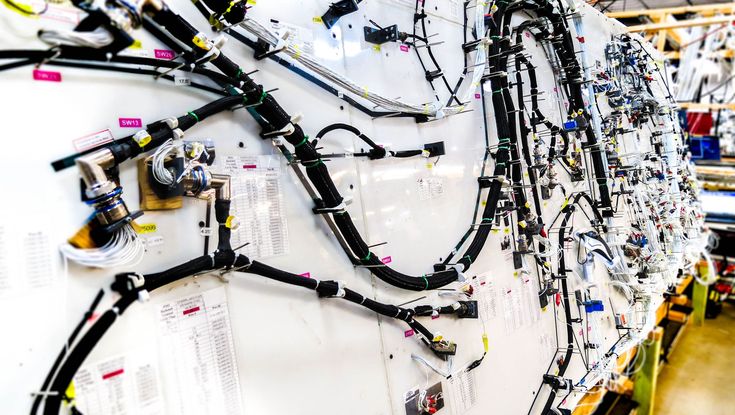The aviation industry is built on precision, safety, and reliability, with every component playing a critical role in ensuring the seamless operation of an aircraft. Among these components, the wire harness (or cable assembly) stands out as the lifeline that connects electrical and electronic systems, enabling communication, power distribution, and control. Wire harness design for aircraft is a highly specialized field, demanding meticulous attention to detail, adherence to stringent regulations, and innovative solutions to meet the unique challenges of aviation. This article explores the complexities of aircraft wire harness design, key considerations, and advancements shaping the future of aerospace wiring.
The Critical Role of Wire Harnesses in Aircraft
A wire harness is an integrated assembly of wires, connectors, terminals, and protective sleeves that organizes and routes electrical signals and power throughout an aircraft. It serves as the backbone for systems such as:
- Avionics: Navigation, communication, and flight control systems.
- Power Distribution: Delivering electricity from generators or batteries to engines, lighting, and onboard equipment.
- Sensor Networks: Connecting sensors for monitoring engine performance, cabin pressure, and environmental controls.
- In-Flight Entertainment (IFE): Supporting passenger-facing systems in commercial aircraft.
Given the mission-critical nature of these systems, wire harnesses must ensure uninterrupted performance under extreme conditions, including high altitudes, temperature fluctuations, vibration, and electromagnetic interference (EMI).
Key Design Considerations for Aircraft Wire Harnesses
Designing wire harnesses for aircraft involves balancing performance, weight, safety, and regulatory compliance. Below are the primary factors engineers must address:
1. Regulatory Compliance and Certification
Aircraft wire harnesses must comply with rigorous standards set by aviation authorities such as the FAA (Federal Aviation Administration), EASA (European Union Aviation Safety Agency), and SAE International. Key standards include:
- AS50881: Governing wiring practices for aerospace vehicles.
- DO-160: Testing for environmental conditions (e.g., temperature, humidity, vibration).
- Fire Safety: Compliance with flammability and smoke emission requirements (e.g., FAR 25.853).
Certification processes ensure harnesses meet safety, durability, and performance benchmarks.
2. Weight Optimization
Aircraft weight directly impacts fuel efficiency and operational costs. Engineers use lightweight materials such as aluminum wires, high-strength composites, and miniaturized connectors to reduce harness weight without compromising conductivity or durability.
3. Durability and Environmental Resistance
Aircraft operate in harsh environments, from sub-zero temperatures at high altitudes to heat generated by engines. Wire harnesses must incorporate:
- High-Temperature Insulation: Materials like PTFE (Teflon) or ETFE to withstand extreme heat.
- Corrosion-Resistant Coatings: Protection against moisture, chemicals, and salt spray.
- Vibration Damping: Flexible conduits and strain relief to prevent wire fatigue.
4. EMI/RFI Shielding
Avionics and communication systems are highly sensitive to electromagnetic and radio-frequency interference (EMI/RFI). Shielded cables, twisted pairs, and conductive coatings are essential to maintain signal integrity.
5. Redundancy and Fault Tolerance
Safety-critical systems (e.g., flight controls) often require redundant wiring paths to ensure continued operation in case of a failure. This redundancy must be carefully designed to avoid unnecessary weight or complexity.
6. Modularity and Maintenance
Modular harness designs simplify installation, troubleshooting, and repairs. Quick-disconnect connectors and standardized interfaces enable efficient maintenance, reducing aircraft downtime.
Innovations in Aircraft Wire Harness Design
Advancements in materials, manufacturing, and digital technologies are revolutionizing aircraft wire harness design:
1. Advanced Materials
- Composite Cables: Combining strength and lightweight properties for improved performance.
- High-Speed Data Cables: Fiber-optic or shielded twisted pairs to support next-gen avionics and in-flight connectivity.
2. Additive Manufacturing
3D printing enables the creation of custom brackets, conduits, and connector housings tailored to an aircraft’s specific layout, optimizing space and reducing weight.
3. Smart Harnesses
Embedded sensors and IoT-enabled systems can monitor wire health in real time, detecting issues like insulation degradation or loose connections. Predictive maintenance powered by AI reduces the risk of in-flight failures.
4. Automated Testing and Validation
Robotic testing systems and software tools (e.g., CAD/CAE simulations) streamline harness validation, ensuring compliance with electrical, mechanical, and environmental standards.
5. Sustainable Practices
The aviation industry is increasingly prioritizing sustainability. Recyclable materials, energy-efficient manufacturing processes, and reduced waste are becoming key focus areas in harness design.
Challenges and Future Trends
Despite technological progress, challenges remain in aircraft wire harness design:
- Complexity: Modern aircraft incorporate thousands of miles of wiring, requiring meticulous planning to avoid interference and ensure maintainability.
- Integration with New Technologies: Hybrid-electric propulsion, autonomous systems, and advanced avionics demand innovative wiring solutions.
- Cost and Scalability: Balancing performance with cost-effectiveness is critical for both commercial and military applications.
Future trends shaping the industry include:
- More Electric Aircraft (MEA): Transitioning from hydraulic/pneumatic systems to electrical ones increases wiring demands.
- Digital Twins: Virtual replicas of wire harnesses enable real-time monitoring and optimization throughout an aircraft’s lifecycle.
- Wireless Systems: While still limited, wireless data transfer could reduce wiring complexity for non-critical systems.
Conclusion
Wire harness design is a cornerstone of aircraft engineering, underpinning the safety, efficiency, and functionality of modern aviation. As aircraft become more advanced—incorporating hybrid propulsion, AI-driven systems, and enhanced passenger experiences—the role of wire harnesses will only grow in importance. By embracing innovations in materials, manufacturing, and digital technologies, engineers can overcome current challenges and pave the way for the next generation of aircraft. In an industry where reliability is non-negotiable, the wire harness remains a silent yet indispensable hero, ensuring that every flight reaches its destination safely.


No responses yet